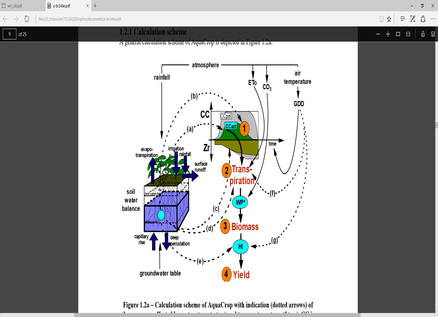Crop simulation models are widely used by scientists, policy-makers, and practitioners to understand the response of crop yield to variables including soil fertility, water availability, and atmospheric composition.
Among crop simulation models a common drawback is the need for highly detailed input data and parameter values, which are rarely available in data-scarce regions such as sub-Saharan Africa. The Food and Agriculture Organization (FAO) AquaCrop model was developed to address many of these limitations. This model simulates the water and nutrient-limited yield of several herbaceous crops under a wide variety of climate and management conditions. AquaCrop was conceived as an evolution of the FAO Irrigation and Drainage Paper no. 33, which provides a set of empirical equations to estimate the yield response of crops to water availability. Although Paper no. 33 has been used extensively around the world, understanding of crop development processes has advanced considerably since its inception. The goal of AquaCrop was to retain the focus on water and broad applicability of the method outlined in Paper no. 33, while improving the accuracy of crop yield estimations by incorporating a host of scientific updates. The model was designed to be less complicated than other crop simulation models to provide a robust and user-focused model which could be applied in diverse settings around the world.
In TWIGA, we are developing a spatially explicit, open-source implementation of AquaCrop written in Python (here). We are using this in a variety of contexts, from developing sophisticated index-based insurance products to providing near-term forecasts of crop development to farmers based on smartphone imagery and weather data from the TAHMO network.

Figure 1: Wheat production in Kenya simulated by AquaCrop. 
Figure 2: Overview of the FAO AquaCrop model (after http://www.fao.org/3/a-i6051e.pdf, accessed September 2020).

